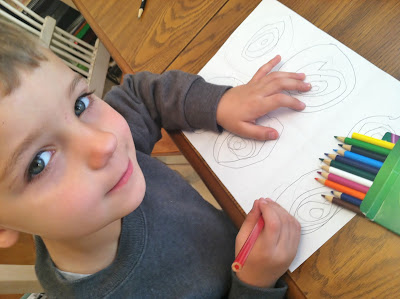Don't Miss the Best Part
And all My Hard Work!
*All of our FREE Printable Notebook Pages for this Unit Study are located at Noah's Ark Homeschool Academy on Wordpress.*
*This Unit Study does NOT work well without the FREE Printable Notebook Pages. Please do NOT skip that step.*
Before we get started, please head over to Noah's Ark Homeschool Academy on Wordpress to download our FREE Notebooking Pages that accompany this Unit Study. The Notebooking Pages download is listed in the text as a clickable link, and then you must click it again on the next page. You will also find a plethora or wonderful penguin resources!
- Download and print our FREE Notebook pages which include our comprehension questions. Have your child answer the questions for a chapter directly after reading it. This study guide covers the first 3 chapters of Mr. Popper's Penguins.
- Mr. Popper was a house painter. Let's find out what a house painter does. Now tell about what you learned in your notebook.
- Here are some free printable 1930's wall paper designs that you can just look at or use them to decorate a cardboard box doll house or to make pockets and mini-books for this unit study.
- Here is a free printable 1930's paper doll to live in your cardboard box doll house.
- 1938 was the year Mr. Popper's Penguins was published. Learn about what it was like to live in the 1930's for children and compare it to what it is like for your today. Organize your information on a Venn Diagram.
- Mr. Popper and his family lived in a Bungalow. Find out what a Bungalow is and tell about it in your notebook.
- Find India, the Himalayas, South Seas, North Pole, and the South Pole on an atlas, globe, or world map.
- Mr. Popper said that penguins live in the South Pole and Polar Bears live in the North Pole. Compare North and South Pole and record your findings on a Venn Diagram. (use the Venn Diagram link above or make your own)
- Do some creative writing and tell a short story of how a penguin traveled from the South Pole to the North Pole.
- Be a detective and use the clues from the book to figure out what kind of penguin Mr. Popper got for his surprise.
- The penguin came packed in dry-ice. Learn more about dry-ice and do some fun experiments.
- Watch this dry-ice experiment video, and watch this one too.
- When you come to the part in the story where they mention 10 o'clock have your child change their clocks time to 10 o'clock and then have them change it to the time it is at your house right then. Have them calculate the elapsed time.
- The penguin walked the length and width of the bath tub and it was 6 steps in length and 2 steps in width. Of course your child's feet aren't the same size as the penguins but for a fun math exercise have your child take 6 steps one foot in front of the other and mark the start and finish point. measure the distance. Now do the same for the width. Describe to your child the difference between length and width.
- This story starts off on Wednesday, September twenty-ninth and you will follow this family for 9 months. Have you child record the Popper families adventures through these nine months. They can tell details described in the story of what the seasons are like as well. Keep a timeline of the events and any dates mentioned in the story.
- Spelling: Have your child spell these words with alphabet beads or jot them down in their notebook. You can use them all or pick a few.
- Thursday
- September
- Thirtieth
- Wednesday
- Twenty-ninth
- Penguins
- Length
- Width
- Calcimine
- Expedition
- Mending
- Spectacles
- Queer
- Stout
- Pompous
- Toboggan
- Bungalow
- North Pole
- South Pole
Here are the answers to the questions from the notebook:
- House Painter
- He had never seen the Poles, or even left Stillwater
- Bungalow
- The kind that lasted all year
- Answers will vary
- It had National Geographic Magazine Pictures all over the walls
- Answers will vary
- Answers will vary
- Answers will vary
- Too much dirt in the house and she already has enough dirt
- Goldfish
- They crowd together until one penguin gets pushed in
- They didn't have a TV
- Not a letter, a surprise
- He was curious about Admiral Drake's message
- The Expressman
- A faint "ork"
- The penguin kept biting the faucets
- No
- Captain Cook
Thank you for visiting Noah's Ark Homeschool Academy and please keep your eye out for following chapters of our Mr. Popper's Penguins Unit Study!






















































